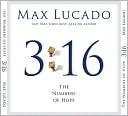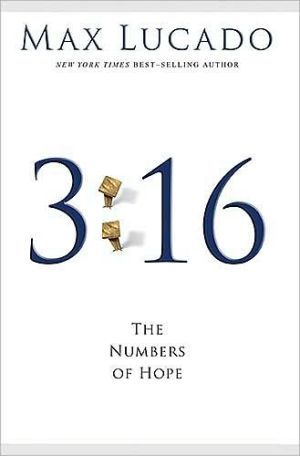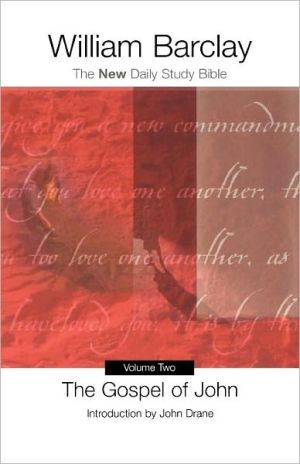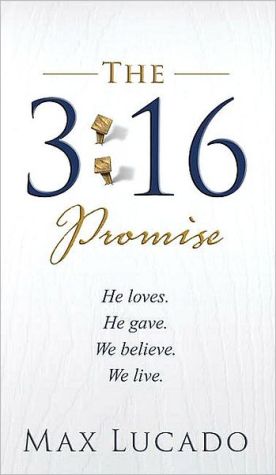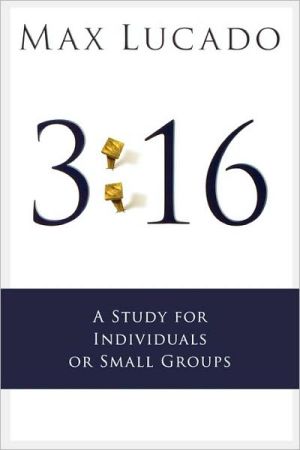John: The NIV Application Commentary
The NIV Application Commentary helps you communicate and apply biblical text effectively in today's context. The Gospel of John tells us the story that is the foundation of the distinctive teaching of Christianity. It provides all the elements necessary to see the full picture of the person and work of Jesus: a human Christ to redeem us, a divine Christ to reveal God's nature, and a powerful, Spirit-filled Christ to help us lead holy lives. This commentary unveils, in today's terminology,...
Search in google:
This commentary on John helps us with both halves of the interpretive task. It shows readers how to bring the ancient message of John into a modern context, and it explains not only what the book of John meant to its original readers but also how it can speak powerfully today.
John\ \ By Gary M. Burge \ Zondervan\ Copyright © 2000 Zondervan\ All right reserved.\ ISBN: 0-310-49750-7 \ \ \ Chapter One\ John 1:1-18\ * * *\ In the beginning was the Word, and the Word was with God, and the Word was God. 2 He was with God in the beginning.\ 3 Through him all things were made; without him nothing was made that has been made. 4 In him was life, and that life was the light of men. 5 The light shines in the darkness, but the darkness has not understood it.\ 6 There came a man who was sent from God; his name was John. 7 He came as a witness to testify concerning that light, so that through him all men might believe. 8 He himself was not the light; he came only as a witness to the light. 9 The true light that gives light to every man was coming into the world.\ 10 He was in the world, and though the world was made through him, the world did not recognize him. 11 He came to that which was his own, but his own did not receive him. 12 Yet to all who received him, to those who believed in his name, he gave the right to become children of God-13 children born not of natural descent, nor of human decision or a husband's will, but born of God.\ 14 The Word became flesh and made his dwelling among us. We have seen his glory, the glory of the One and Only, who came from the Father, full of grace and truth.\ 15 John testifies concerning him. He cries out, saying, "This was he of whom I said, 'He who comes after me has surpassed me because he was before me.'" 16 From the fullness of his grace we have all received one blessing after another. 17 For the law was given through Moses; grace and truth came through Jesus Christ. 18 No one has ever seen God, but God the One and Only, who is at the Father's side, has made him known.\ Original Meaning\ One reason why the Gospel of John was symbolized in the ancient church by the eagle is the lofty heights attained by its prologue. With skill and delicacy, John handles issues of profound importance. It comes as no surprise that this prologue has been foundational to the classic Christian formulation of the doctrine of Christ. Here divinity and humanity, preexistence and incarnation, revelation and sacrifice are each discussed by John with deceptive simplicity.\ This prologue may well have been an ancient Christian hymn. We know of other hymns extant especially in Paul's writing, and here too there is an artful flowing of language and theology. In the medieval church the prologue was so venerated that it was sometimes worn in an amulet around the neck to ward off disease and evil spirits. The Roman church read it over the sick and newly baptized. It was even the final prayer of the Roman mass.\ Many scholars have attempted to give some literary form to the hymn, and it is impossible here to survey their results. I have found a satisfying structure that combines a number of scholarly insights and breaks down the prologue into four theologically distinguishable strophes. In Greek literature a strophe was a turn (as in dance) or a choral poem or lyric used with dance. In poetry we might call it a stanza. Here John offers four artful "turnings," which give us separate glimpses of the Word and his relation to God and the world.\ This prologue is also an overture to the story of the rest of Gospel. Themes mentioned here will be picked up later and given fuller development: the preexistence of Christ (1:1; 17:5), divine light entering the world (1:4, 9; 8:12; 9:5), the opposition of light and darkness (1:5; 3:19), the visibility of glory (1:14; 12:41), Jesus as the only Son (1:14, 18; 3:16), divine birth (1:12-13; 3:1ff.), and the place of John the Baptist in Jesus' work (1:7, 15; 1:19, 30). More precisely, 1:11-12 reflect the layout or the emphasis of the Gospel's entire structure: "He came to that which was his own, but his own did not receive him. Yet to all who received him, to those who believed in his name, he gave the right to become children of God." The first half of the Gospel (chs. 1-12, the Book of Signs) describes the rejection of Jesus by Judaism, "his own people." The second half of the book (chs. 13-21, the Book of Glory) describes the "flock of Jesus," those who have embraced his messiahship and followed him.\ In its earliest edition, John's Gospel may have begun at 1:19 with the story of John the Baptist. This hymn was presumably later added by John about the same time he wrote his letters (cf. the opening verses of 1 John and the Gospel) to serve as a literary preface or prologue. In order to knit this section to his Gospel, John added material from the story of John the Baptist (1:6-8, 15) as well as his own personal commentary on the hymn (1:13, 17-18). Of course, any reconstruction such as this is speculative; but when examined closely, it enhances our understanding of the theological message of the prologue.\ The First Strophe\ In the beginning was the Word, And the Word was with God, And the Word was God. He was in the beginning with God.\ The Second Strophe\ All things came into being through him, and without him not one thing came into being. What has come into being in him was life, and the life was the light of all people. The light shines in the darkness, and the darkness has not overcome it.\ [There was a man sent from God, whose name was John. He came as a witness to testify to the light, so that all might believe through him. He himself was not the light, but he came to testify to the light.]\ The Third Strophe\ The true light, which enlightens everyone, was coming into the world. He was in the world, and the world came into being through him; yet the world did not know him. He came to what was his own people, and his own people did not accept him. But to all who received him, who believed on his name, he gave the power to become children of God.\ [Who were {who was} born, not of blood or of the will of the flesh or of the will of man, but of God.]\ The Fourth Strophe\ And the Word became flesh and dwelt among us, full of grace and truth. And we have seen his glory, the glory as of a father's only son.\ [John testified to him and cried out, "This is he of whom I said, 'He who comes after me ranks ahead of me because he was before me.'"]\ From his fullness we have all received grace upon grace.\ [The law indeed was given through Moses; grace and truth came through Jesus Christ. No one has ever seen God. It is {God} the only Son, who is close to the Father's bosom, who has made him known.]\ The First Strophe: The Logos and God (1:1-2)\ The first verses of John's Gospel are a triumph of Christian theology. John begins by establishing the preeminence of the Word existing before the creation of the world. The initial allusion to Genesis 1 cannot be missed (John 1:1). This is a Gospel that will record the re-creation of men and women, the giving of life in darkness where there is no hope. This parallels the thought of Genesis 1, in which God breathes life into the nostrils of Adam and provides new possibilities for the world.\ John begins by introducing Jesus as "the Word" (logos) and is building here on much contemporary Jewish thought, where the word of God took on personal creative attributes (Gen. 1; Ps. 33:6, 9). In the New Testament period it was personified (Wisd. Sol. 7:24; 18:15-16) and known by some as the immanent power of God creatively at work in the world (Philo). John identifies this Word as Jesus Christ. As such John can attribute to him various divine functions, such as creation (John 1:3, 10) and giving of life (1:4, 14, 16).\ (Continues...)\ \ \ \ \ Excerpted from John by Gary M. Burge Copyright © 2000 by Zondervan. Excerpted by permission.\ All rights reserved. No part of this excerpt may be reproduced or reprinted without permission in writing from the publisher.\ Excerpts are provided by Dial-A-Book Inc. solely for the personal use of visitors to this web site. \ \
Table of Contents Series Introduction General Editor's Preface Author's Preface Abbreviations Introduction The Structure of John's Gospel Bibliography Text and Commentary on John Scripture Index Subject Index

